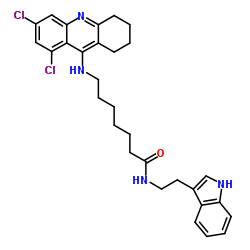| Structure | Name/CAS No. | Articles |
|---|---|---|
 |
Acetonitrile
CAS:75-05-8 |
|
 |
Methanol
CAS:67-56-1 |
|
 |
Formic Acid
CAS:64-18-6 |
|
 |
Native Aspergillus melleus Acylase I
CAS:9012-37-7 |
|
 |
Arylsulfatase
CAS:9016-17-5 |